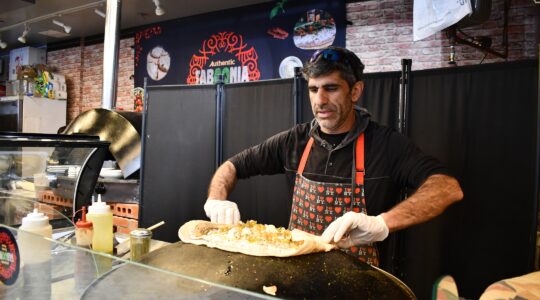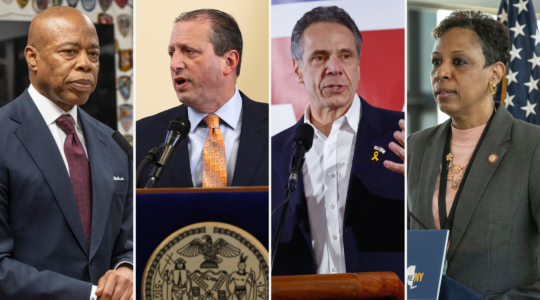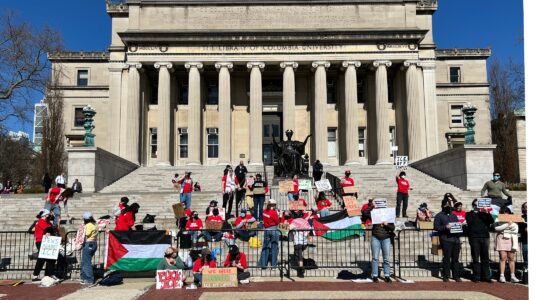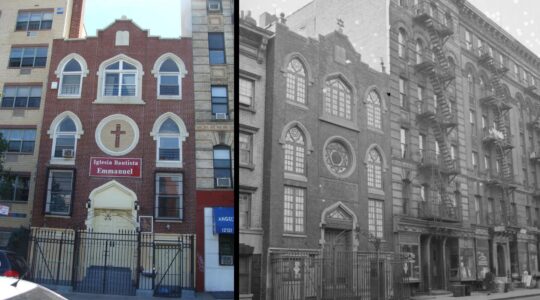After Hurricane Irma flooded houses, tore off roofs and knocked out electricity in early September, the Florida Keys officially reopened for tourism on Oct. 1. But Rabbi Yaakov Zucker, who founded Chabad of the Florida Keys 22 years ago, said it took until mid-October for electricity to be reliably restored across the fragile archipelago.
“Now, I want to say that we are back in business,” said Rabbi Zucker from Key West last weekend — noting that virtually every facet of the region’s social and economic infrastructure is dependent, directly or indirectly, on tourism. “Despite a little mess here and there, the stores and the restaurants are open. They’re not making much money, but they’re open. We want our tourists back and we need our tourists back.”
After a month and a half of headlines chronicling the devastation wrought by Hurricanes Irma and Maria, many travelers have been wondering: When it is appropriate, and desirable, for tourists to return to the affected islands?
I caught up by phone last weekend with the Chabad rabbis whose centers serve as Jewish anchors for America’s hard-hit Caribbean destinations — Key West, Puerto Rico and the U.S. Virgin Islands, home to thousands of Jewish retirees, transplants and winter vacationers.
Puerto Rico hosts the Caribbean’s largest Jewish community, which has blossomed in recent years as entrepreneurs are attracted by the island’s tax rates and by Parallel 18, a program to help accelerate the growth of small, young companies. Tourism was just recovering after the 2015-16 Zika virus outbreak, locals said, when the territory’s infrastructure was crippled by Hurricane Maria.
With 85 percent of residents still without electricity and flights severely limited, Puerto Rico’s resorts are tentatively aiming to reopen in early 2018.
But Rabbi Mendel Zarchi said that in his 20 years overseeing Chabad of Puerto Rico, he has never witnessed the kind of raw human want that is now a daily reality for the island territory.
The rabbi has watched neighbors drinking from hoses, washing in buckets and going without vital medications. Supermarkets are reopening with limited stock, but many roads are impassable. Cash is scarce; halfway through the fall semester, school is a springtime memory.
“It’s hard to process. I’m in America and I’m seeing a complete breakdown in daily living,” sighed Rabbi Zarchi, who said he was schvitzing in the muggy October heat. “But we’re speaking on the phone, so that’s a great thing,” he added.
Chabad’s new San Juan building, generator-equipped and built to withstand hurricanes, became a refuge for a Jewish community that numbers 2,500 on a territory of 3.5 million. “We’ve had people shower here, using the restroom, powering their phones, eating meals,” said the rabbi, whose staff sheltered pets and coordinated emergency housing at local apartments.
Hurricane Maria bore down on the eve of Rosh HaShanah, yet Rabbi Zarchi held services for those who could trudge over. Many of those families have since decamped for the mainland U.S., and winter events were cancelled as hotel rooms filled with FEMA personnel. “The effect is tremendous,” the rabbi said, adding that he has a plea for would-be vacationers: “Plan your Puerto Rico trip for next year. We want to see you back.”
In the Florida Keys, a week after Maria prompted a Rosh HaShanah evacuation, Rabbi Zucker welcomed 100 worshippers to Kol Nidre services by candlelight, serving kosher meals he trucked in by U-Haul from the mainland. Key West’s fabled vintage architecture survived the storm, and locals are anxiously awaiting the return of desperately needed tourism dollars to rebuild their own roofs and floors, the rabbi said.
On the island of St. Thomas, Maria largely spared the 1833 synagogue that is one of the Caribbean’s Jewish landmarks, said Rabbi Asher Federman, who arrived 13 years ago to head up Chabad of the Virgin Islands. His center became a point of contact for relief efforts after the storms wreaked havoc across St. Thomas, St. John and St. Croix.
“On an island, there’s a real sense of community, and people have come together in an amazing way,” said the rabbi, who, like his colleagues, praised the generosity and initiative of mainland Jewish benefactors.
While hard-hit St. Croix and less-accessible St. John will likely need the winter to recover, Rabbi Federman said electricity has been largely restored in St. Thomas’s capital and cruise port of Charlotte Amalie. Cruises, scheduled to return in November, are expected to jump-start tourism across this region, since passengers rarely venture beyond limited harbor zones that are easier to rebuild.
“People want to get back to work. They’re eager to piece their lives back together,” said Rabbi Federman. He added that this winter’s visitors will have the opportunity to witness the resiliency of a community in rebirth, with quieter shorelines and thinner crowds compensating for less-accessible hinterlands. “The beaches are clean and beautiful, the turquoise water is shining,” said the rabbi. “And the hillsides are turning green again.”
The New York Jewish Week brings you the stories behind the headlines, keeping you connected to Jewish life in New York. Help sustain the reporting you trust by donating today.




